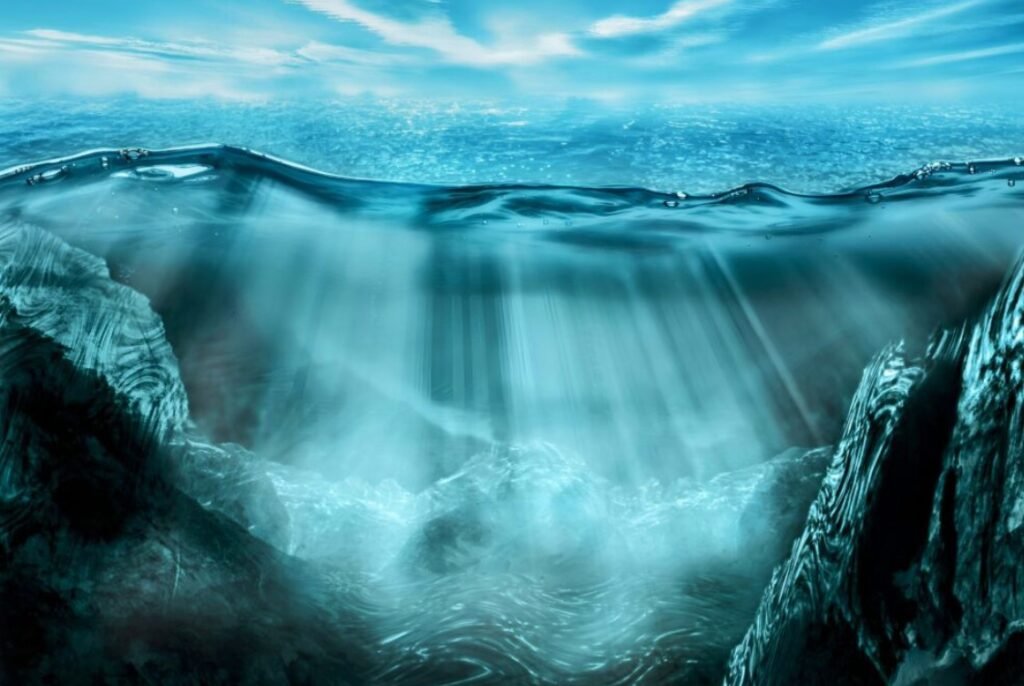A new study has revealed that the melting of frozen methane deposits, also known as ‘fire ice’, under the seafloor is releasing large amounts of the potent greenhouse gas into the ocean. The researchers warn that this could accelerate global warming and ocean acidification if the methane reaches the atmosphere.
‘Fire ice’ is a common name for methane hydrate, a solid substance that forms when methane molecules are trapped within a lattice of water ice under high pressure and low temperature conditions. Methane hydrate is found in abundance in the sediments of the continental margins, where the water depth is between 300 and 1000 meters.
Methane hydrate is stable only within a narrow range of temperature and pressure. If the temperature rises or the pressure drops, the hydrate will dissociate and release the methane gas. This can happen naturally due to geological events, such as earthquakes or landslides, or due to human activities, such as drilling or mining.
The study, published in the journal Science Advances, found that the warming of the ocean caused by climate change is one of the main factors that is destabilizing the methane hydrate in the Arctic Ocean. The researchers used a combination of field observations, laboratory experiments, and numerical modeling to investigate the mechanisms and consequences of methane release from the seafloor.

How did the researchers measure the methane release?
The researchers collected samples of seawater and sediment cores from the East Siberian Arctic Shelf, which is the largest and shallowest continental shelf in the world. They also deployed sensors and acoustic devices to detect and measure the methane bubbles that were rising from the seafloor.
They found that the methane release was widespread and variable, ranging from 0.1 to 10.5 milligrams of methane per square meter per day. They also found that the methane release was influenced by the seasonal changes in sea ice cover, water temperature, and water depth.
The researchers estimated that the total amount of methane released from the East Siberian Arctic Shelf was about 4.5 teragrams (4.5 million metric tons) per year, which is equivalent to the annual methane emissions from Norway.
What are the impacts of methane release on the environment?
Methane is a powerful greenhouse gas that can trap more heat in the atmosphere than carbon dioxide. Methane also reacts with oxygen to form carbon dioxide and water, which can increase the acidity of the ocean and affect the marine life.
However, not all the methane that is released from the seafloor reaches the atmosphere. Some of it dissolves in the seawater, where it can be consumed by bacteria or oxidized by chemical reactions. Some of it also gets trapped under the sea ice or in the water column, where it can be transported by ocean currents to other regions.
The researchers calculated that only about 1% of the methane released from the East Siberian Arctic Shelf escapes to the atmosphere, while the rest remains in the ocean. They also found that the methane release has a significant impact on the carbon cycle and the oxygen levels in the water.
The researchers warn that the methane release could have more severe consequences in the future, as the Arctic Ocean continues to warm and the sea ice cover continues to decline. They call for more research and monitoring of the methane hydrate dynamics and the methane fluxes in the Arctic Ocean.
What can be done to prevent or mitigate the methane release?
The researchers suggest that the best way to prevent or mitigate the methane release is to reduce the greenhouse gas emissions that are causing global warming and ocean warming. They also recommend that the methane hydrate deposits should be protected from human disturbance, such as drilling or mining, that could trigger their dissociation.
The researchers also propose that the methane release could be used as an opportunity to generate clean energy, by capturing and utilizing the methane gas before it escapes to the atmosphere. They point out that some countries, such as Japan and China, are already exploring the feasibility of extracting methane from hydrate deposits.
The researchers hope that their study will raise awareness and stimulate further research on the methane release from the seafloor, which is a complex and poorly understood phenomenon that could have significant implications for the climate and the environment.
